A couple of years ago, I had the opportunity to review a few of the Classic Series cables coming out of San Diego’s Audio Art Cable. Since that the time, the company and their product line have expanded, giving me the chance again to sample some of their wares.
I brought one cable at a time into my system to fully appreciate each one, rather than just completely re-wire my whole rig, not knowing which cable was really sounding like what. There’s much to cover here, so let’s dive right in!
AAC IC-3 e2 Cryo Interconnect Cable Pair Silver RCA – 1.0m pair, w/ ETI Kryo RCA’s — $480
The first cable I swap out is the economical Monster Cable interconnect between the Burson Swing DAC I recently evaluated (see “Thunder from Down Under”) and the new Quad Vena II Play integrated amplifier. Immediately, the difference is staggering. My wife is in the room here with me as we spin Tom Petty’s Wildflowers solo disc, and while “It’s Good to Be King” plays, she remarks that it suddenly sounds as if Petty is in the room with us.
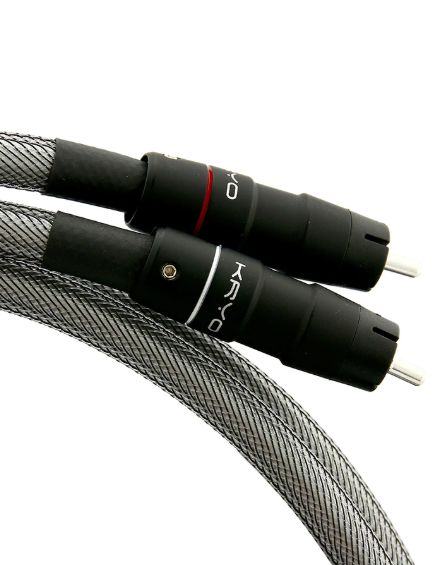
Indeed, vocals are clearer now, a bit more centered and forward, while the soundstage opens up behind them. Guitars have expanded in both their width and depth. There is enhanced definition in the pick strumming across the strings. More of the musical experience is being transferred to the Quad, in a big and obvious way.
As the album progresses to “Honey Bee,” this larger transference becomes an open floodgate. The soundstage now allows me to peer into the details of Mike Campbell’s guitar work that are unfolding right in front of me. This whole disc becomes a fresh listen for both of us, as we sit here, soaking it in.
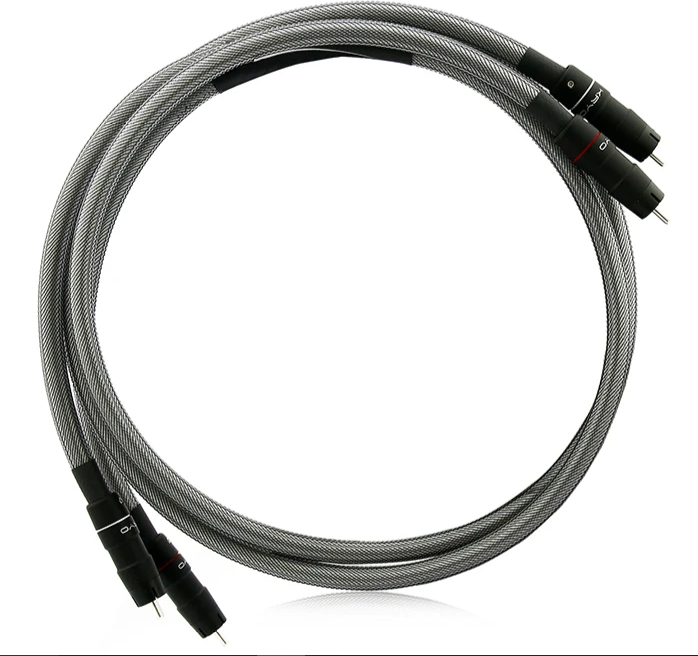
What the IC-3 e2 are: These cables are individually crafted one pair at a time in San Diego, CA using Cardas Quad Eutectic solder, silver-plater tellurium copper Eichmann Tech RCA’s, and a durable mesh Techflex sleeving. All of this craftsmanship comes together to create a remarkable value for the asking price.
AAC D1-SE2 Digital Coax Cable with Silver RCA – 1.0m Interconnect, w/ ETI Silver Link RCA’s — $350
The next cable I exchange is the coaxial link between my Rotel CD player and the Burson Swing. I’ve been using a Blue Jean Cables 1m cable, which is a decent cable; I’m not sure what to expect. OK, swap complete.
I feel it’s best to start the Tom Petty disc over again, and relisten to the same cuts to examine the differences. I will tell you, there are differences, but at first, they are subtle. As a musician, I’m picking up on more harmonics from Petty’s acoustic guitar. Notes themselves are coming through just a touch more clearly. Percussion is more pronounced and has more snap. There is more immediacy to the music, and absolutely more complexity.
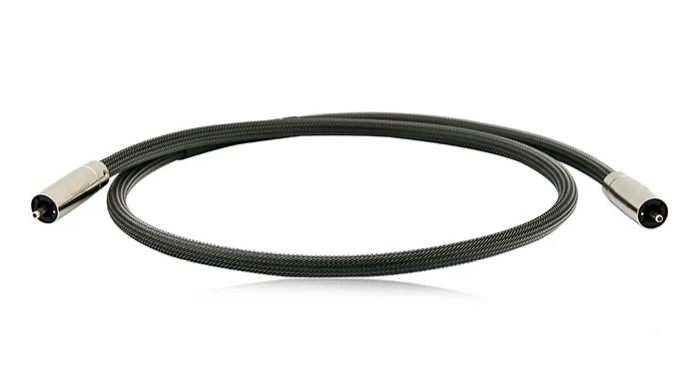
Ones and zeros can be difficult to improve upon, but I am definitely attaining that improvement with the Audio Art cable over the BJC, and it’s wonderful.
What the D-1SE2 is: Handcrafted in San Diego, the D-1SE2 is an ultra-low loss 75 ohm cable available with Eichmann Tech RCA’s or Furutech BNC connectors, and a mesh sleeve.
AAC SC-5 e2 Cryo Double Bi-wire Speaker Cable Pair Banana — 6’ pair w/ ETI Kryo Bananas — $800.00
I firmly believe that your speaker cables are one of the most important components in your system, as much as your CD player, your DAC, or your amplifier. An upgrade here can give you some of the most significant improvements for the money. From what I have seen and heard, Audio Art has always represented a great value in the marketplace.
I was already running a set of Audio Art SC-5 Classic single wire speaker cables in my system and loving them, so what will I hear here as I swap up to the double bi-wire pair?
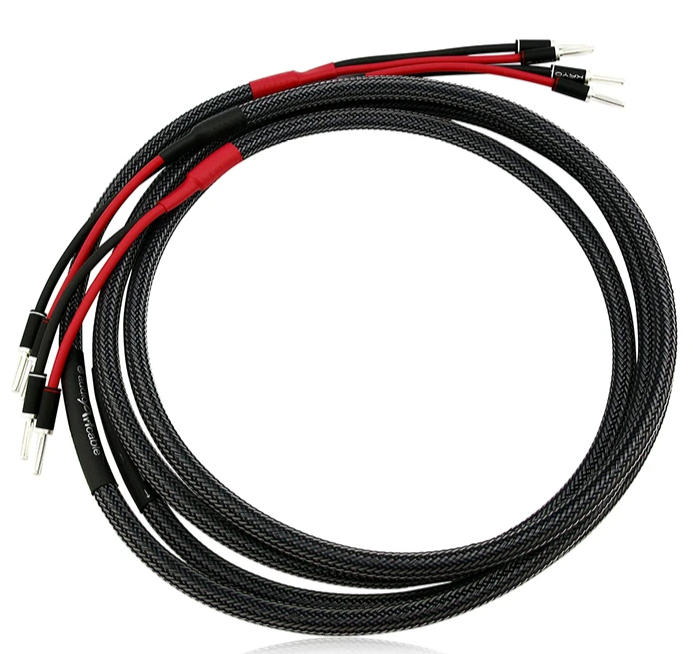
Normally, I like to play lots of discs as demo gear to genuinely listen to any piece, but right now, I’m trying to focus on the differences between these cables, so I’m going right back to the start of Wildflowers. At first, I don’t notice anything, but at just 1:00 into the first song, it becomes glaringly obvious. I hear background percussion instruments far more clearly than I had heard them with the previous cables. Dynamics have increased, and there is more gain overall in the sound. I actually have to raise the level of the subwoofer to match the new volume of the Usher satellite speakers. It’s not just about there being more of everything, but there is an overall increase in the musicality.
Besides sonic improvements, there is a higher grade to the fit and finish. The Eichmann Technology banana plugs mate much more snugly with the Quad amp and Usher speakers. The cables have an honest high-end feel to them, that assure you of a high-quality product right out of the package.
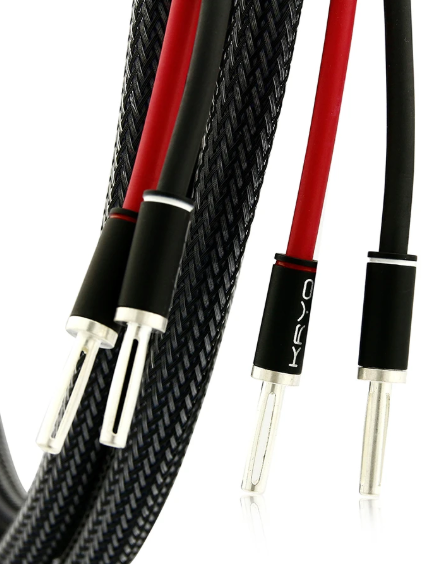
What the SC-5 e-2 are: Newly retooled, enhanced, and hand-crafted in San Diego, these speaker cables feature a patented process deep cryogenic treatment and can be manufactured with ETI Kryo banana jacks or spade ends.
AAC power1 ePlus Cryo with Rhodium 15A Furutech FI-28(R) plug set — 1.5m cord, $670
Once again, I go back to the beginning of Wildflowers to hear the Audio Art power1 cable powering the Quad Vena II Play integrated amplifier. Now things really get good. I notice more flow and emphasis in the piano right away. The ivory keys are more forward in the room and woken up. In track 2, “You Don’t Know How It Feels,” the acoustic instruments take on more life. There is a wider soundstage overall as the Quad is now allowed to be much more expressive. Instruments that are hard-panned left and right sit deeper, almost inside the Usher speakers. There is a new openness and depth that wasn’t there just moments ago.
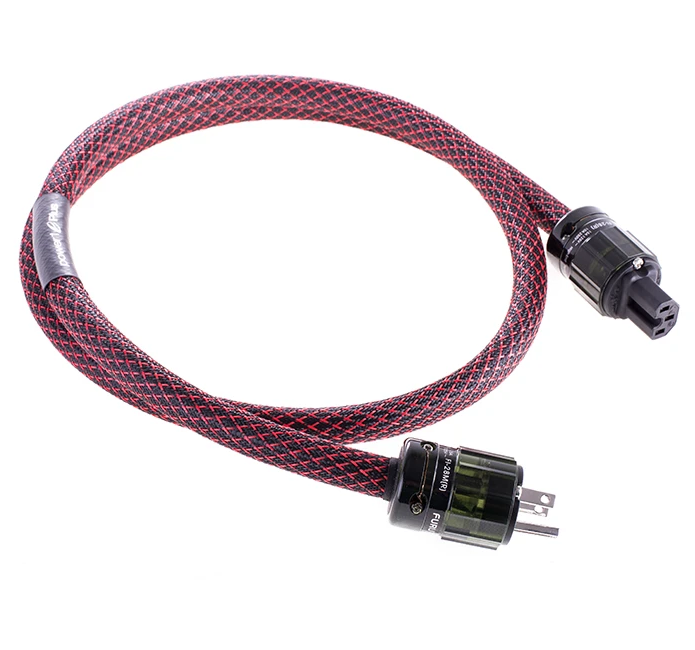
What the power1 ePlus is: As with each cable in this article, the power1 ePlus is hand-crafted in San Diego, using copper based Furutech FI-28 plug sets. They are terminated with a solderless Nano Liquid infused connection with all conductive surfaces treated post assembly with Kontak ECO3x Cleaner.
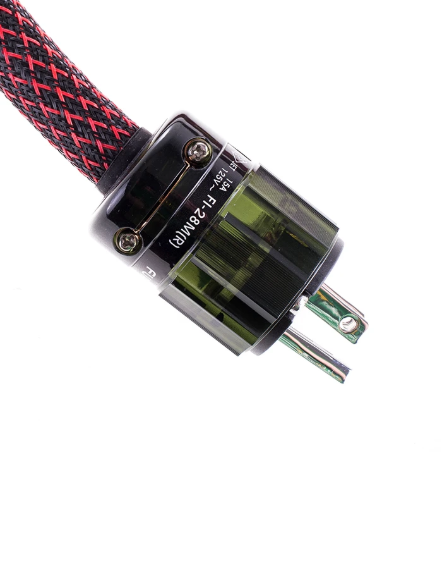
Overall impressions
Now that I have all four cables worked into my system, I break out into other discs with more high-level listening. I’ve judged the differences; now I sit back and enjoy the magic they’re working in my system.
Revisiting Mike Oldfield’s Tubular Bells again is a more expansive experience. There is improved definition in each individual note of the bass guitar. The soundstage is significantly wider than my previous listening session with this disc. My eyes shift left as an acoustic guitar comes in at 4:50, clear and sharp. The 3D effects of this pioneer 1973 recording swirl around my listening space. As each overdubbed instrument comes into play, I hear detail that is new to me.
Finally, to Pink Floyd’s The Endless River. Beginning with recorded dialog, the realism is striking. Spaciousness abounds as the album opens up. There are subtleties with the manner in which David Gilmour distorts the strings of his guitar during the first couple minutes. It’s mesmerizing. The sound from this CD has changed from big to downright huge. Nick Mason’s drums become thunderous.
Wrapping it up
As upgrades go, changing out these cables to the Audio Art products felt more like a system rebuild. Swapping out four cables did more for my system’s sound than many component upgrades could. It doesn’t matter how high-end or audiophile your equipment is if it is not all connected with quality cables. In today’s market, there are a significant number of choices of cables, but Audio Art is a company that is doing things right and at a solid value. Happy listening!
Associated Equipment
Rotel RCD-955AX CD player
Burson Swing DAC
Quad Vena II Play integrated amplifier
Usher SD-500 loudspeakers
Canton AS 22 SC subwoofer
Hi, I really enjoyed this piece, as I find cables fascinating. I’m a relatively new audiophile and have ICs that cost just under $100. I’m not sure it’s worth it to bother (for me), so I’m taking in as much as I can from reviews like yours. One thing I’ve learned setting up my system is that I really dislike having to deal with break-in time since I have a family and don’t get to play the system all that much. You didn’t mention anything about break-in for these cables/cords. Did you actually need to do break-in prior to making your judgements? Thanks!
-Drew
A few of these cables were broken in for me by Audio Art Cables at the factory previous to shipping to me. Better companies like AAC offer that as a service with their wires. Contrary to the naysayers, cables do need to be broken in. I am not a cable scientist, and cannot speak to the physics behind this, I just know what my ears hear. You can get many good ICs for that $100 price point, but they start getting better once you climb over that mark. However, many people will tell you that it starts to become a point of diminishing returns. You have to spend a lot more to get just a little improvement. This is why I look for companies that provide good value. I encourage you to look into AAC’s cables if you can.